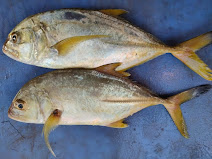When is a sea bass not a sea bass? when it’s served as tilapia. Fish fraud happens everywhere, from endangered species passed off as snapper to deadly pufferfish sold with devastating consequences, how can you know that what you’re eating is what you’ve paid for? Seafood fraud includes swapping cheaper fish and passing them off as more expensive fillets, or putting false, incomplete or misleading information on a label.

List of fishes substituted for more expensive ones.
Asian catfish was found to be the type of fish most often sold as a different, higher value type of fish. The next commonly mislabelled species were sea bass and snapper.
| Fish name | Substitute |
|---|---|
| Asian catfish | Asian catfish was sold as 18 different types of fishes like perch, grouper, sole, plaice, halibut.Also known in the UK as Vietnamese river cobbler , Basa, Swai, Panga, Pacific Dory, Pangasius is a cheap substitute for cod or haddock in uk and Hamour in gulf countries. This relative of catfish is the most common culprit in cases of seafood fraud. It might be called grouper or sole on the menu |
| Sea bass | It is substituted with giant perch or Nile tilapia, fish that should be less and is considered lower quality |
| Red snapper | Red snapper is substituted with catfish, rockfish, tilapia, nile perch, mahi mahi, mullet snapper, malabar blood snapper,Atlantic cod |
| Haddock | One of the most common substitutions was haddock for cod haddock is substituted with saithe |
| chilean sea bass | white bass, striped bass |
| hogfish | Indian grouper. |
| Grouper | tilapia , alaska pollock, nile perch, channel catfish, hake |
| wild salmon | atlantic farmed salmon |
| Atlantic cod | saithe, pollock, whiting, escolar |
| tropical sole | common sole |
| white tuna (albacore) | were actually escolar, This fatty, waxy fish causes digestive upset and diarrhea, also is high in mercury content. |
| gaint freshwater prawn | slipper lobster |
| Alaskan halibut | greenland turbot |
| dover sole | walleye |
| walleye | Alaskan pollock |
| redfish | channel catfish |
| black drum | sheephead |
| florida snapper | lavender jobfish |
| swordfish | mako shark |
| white snapper | white hake |
| bluefin tuna | bigeye tuna ,yellowfin tuna |
| mahi mahi | halibut, Yellowtail, |
| Anchovies | Icefish |
| orange roughy | john dory |
| Monk fish | pufferfish |
| Red mullet | spotted goatfish |
| shark meat with | nile perch |
| red drum | black drum |
| halibut | sea bass, deep water cape hake |
| yellow perch | white perch |
| caviar (sturgeon species) | other fish Roe |
| walleye | sauger |
| chum salmom | pink salmon |
| scallops | skate wings |
| salmon | rainbow trout or steelhead trout |
| blue crabmeat | imported crabmeat |
| abalone | top shell |
Imported seafood was sometimes marketed as locally-caught, while vulnerable species like the Atlantic halibut were falsely advertised as a more sustainable catch.
SEAFOOD fraud is a serious global problem”, one in five fish sold has been mislabelled. Seafood fraud can happen at each step of the supply chain – the restaurant, the distributor, or the processing and packaging phase. You may not be getting the fish you paid for. In most cases, the motivation is economic—slippery restaurateurs frequently serve up cheaper fish than they advertise to cut costs.
Here’s how to avoid seafood fraud.
Buying whole fish is cool! Not only does a whole fish prevent mislabeling, a clear eye and nice sheen on the body will tell you that the fish is good quality! Plus, fish heads make for a great seafood stock. A whole fish, is far easier to identify “than a fillet in a plastic pack. If you’re worry about filleting one yourself, buy the fish and ask your fishmonger to fillet it for you.”Food standards authorities can now use DNA testing to identify fish, but the average customer merely comes equipped with their own senses.
Not only is fish priced lower when it is abundant during its peak season, fish is mislabeled more when it is not in season.
If the price is too good to be true, it probably is a sign that it is a mislabeled product.
The four most common fish that are most likely to be mislabeled for species swap include tuna, snapper, salmon and grouper - always ask extra questions when buying these fish.
Along with ripping off consumers, the consequences of seafood fraud include:
Directly threatens human health. Swapping one fish species for another that may be riddled with contaminants, toxins or allergens can make people sick.
Creates a market for illegal fishing by making it easy to launder illegally caught seafood products through the EU market. This undermines conservation efforts to prevent overfishing and accidental capture of at-risk species and hurts honest fishermen.
Mislabeling fish makes it difficult for consumers to make eco-friendly choices.
Misleads consumers about the true availability of seafood and the state of the marine environment. Because mislabeling maintains the appearance of a steady supply of popular fish species despite severe overfishing, the general public is unaware that the species is in serious trouble.
Consumers can also make a difference. Consider asking questions such as:
What species of fish am I ordering?
Is it wild or farmed?
How was it caught?
Is the price too good to be true?






 FISH FRAUD - Beware of Fish swap or Fake Fish in Restaurants and Seafood Shops
FISH FRAUD - Beware of Fish swap or Fake Fish in Restaurants and Seafood Shops







0 comments:
Post a Comment